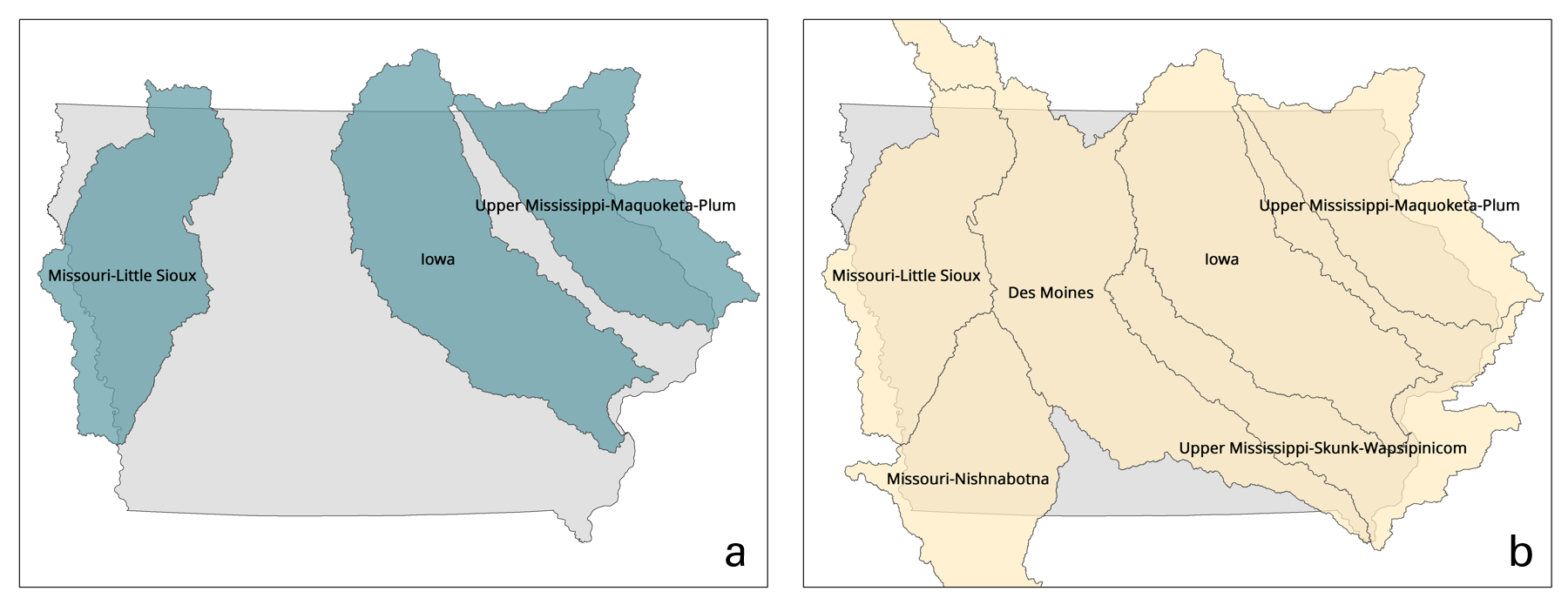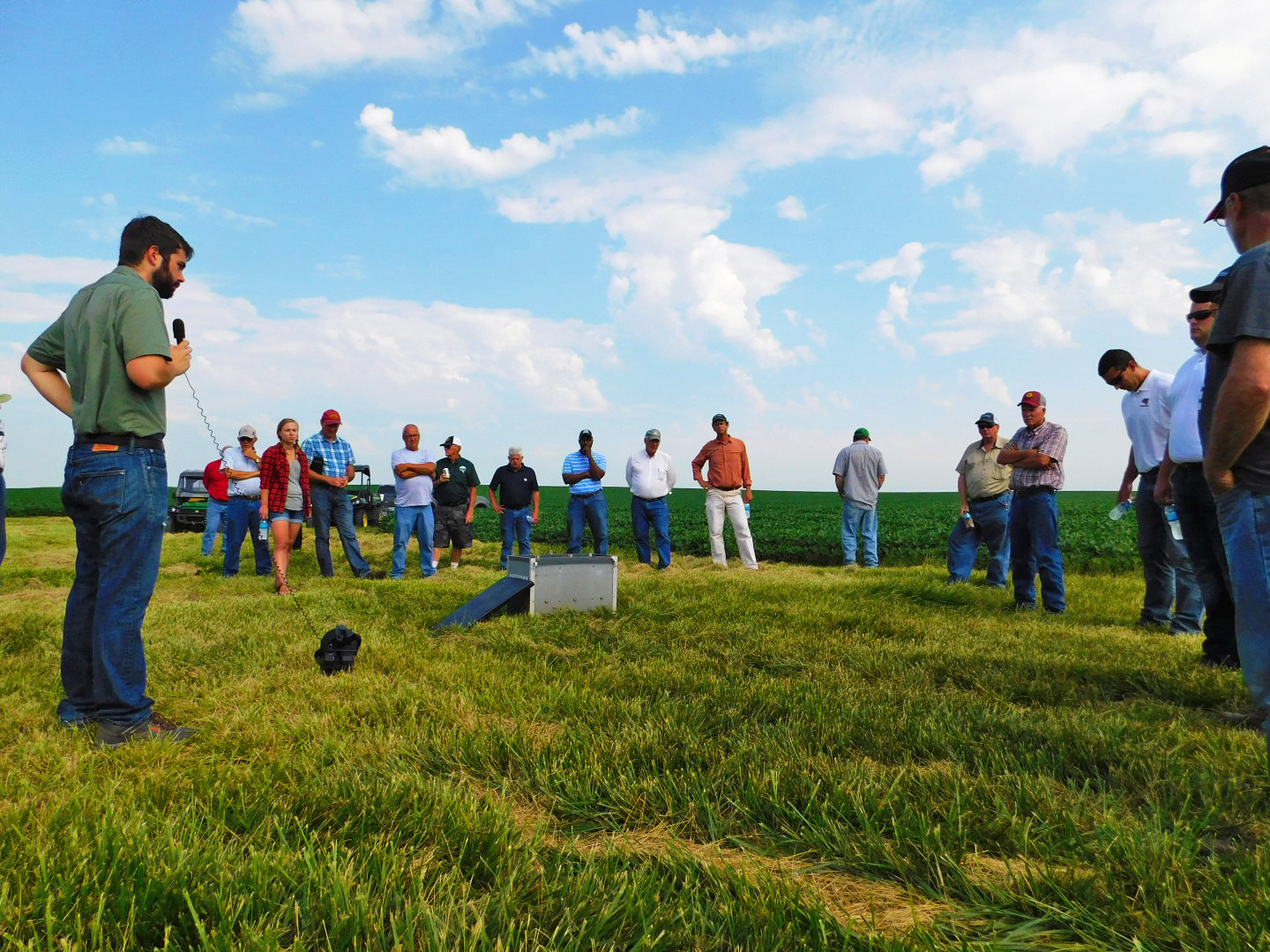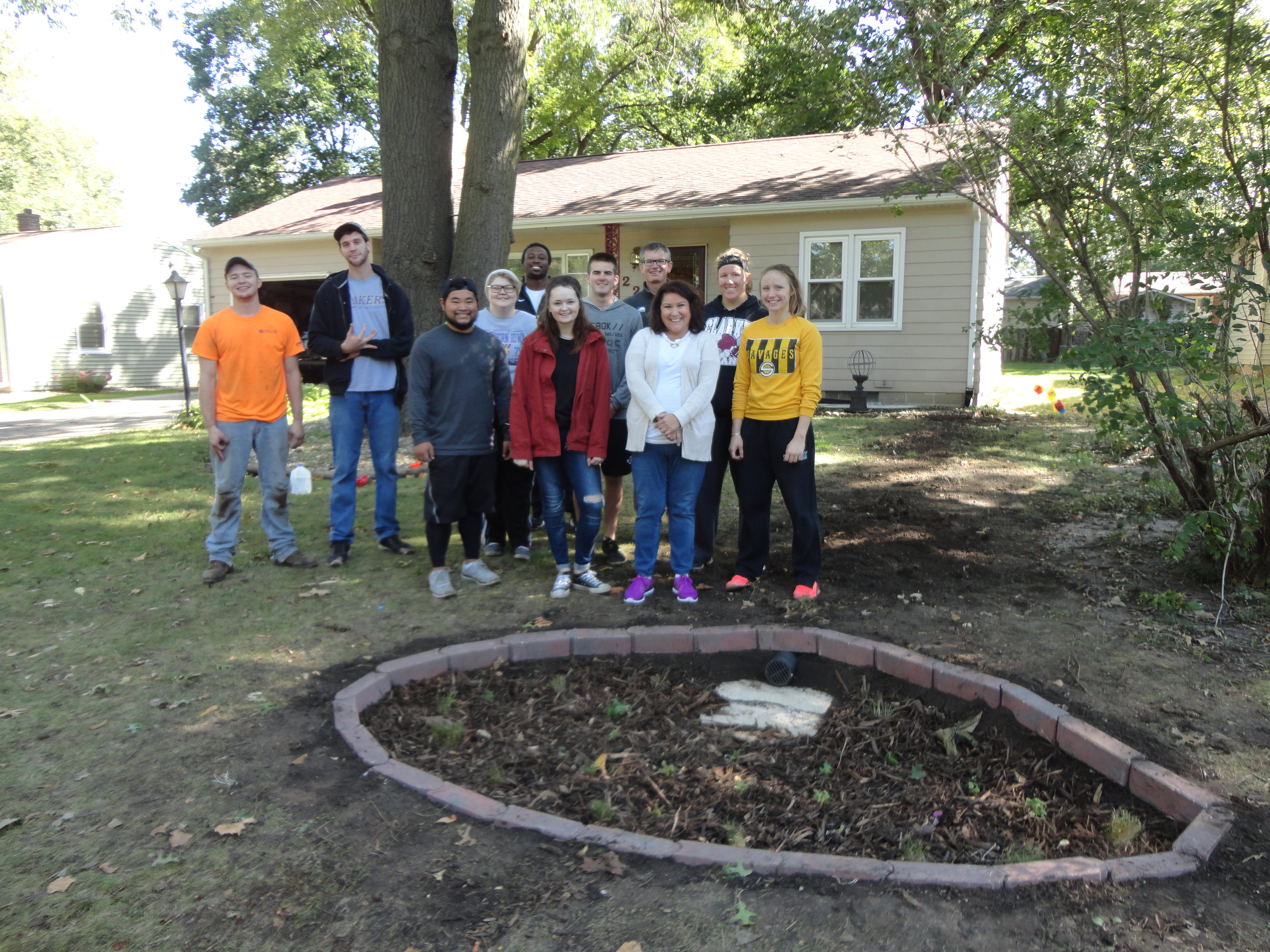Join Iowa Learning Farms on May 10 for a webinar presentation by Spencer Pech from ISG, who will highlight approaches to replacing the sometimes century-old agricultural drainage infrastructure across the Midwest.
Continue readingApril 26 Iowa Learning Farms Webinar: Field-scale Mapping of Evapotranspiration
In the webinar, “Mapping Evapotranspiration at Field Scale,” Arenas will discuss the analysis and estimation of water consumption by crops at one quarter acre resolution. Sharing evapotranspiration data spanning 2016-2021, he will discuss the correlations between understanding water consumption by crops and water resource management practices.
Continue readingEdge of Field Batch and Build Workshop to be held March 2 in Ames
Workshop will provide local farmers, landowners and interested Iowans with an opportunity to listen, share and learn about edge of field practices like bioreactors and saturated buffers
Continue readingAsk a Scientist – River Flow in Gallons
Ask a Scientist – Communities and Flooding
Ask a Scientist – Harmful Algal Blooms
We ask Dr. Elizabeth Swanner at Iowa State University the question: What makes harmful algal blooms so colorful?
Continue readingThe Iowa Nutrient Reduction Strategy Farmer Survey: Tracking Changes in Knowledge, Attitudes, and Behaviors
Post written by Laurie Nowatzke and J. Arbuckle
The Iowa Nutrient Reduction Strategy (NRS) aims to reduce Iowa agriculture’s nitrogen loss and phosphorus loss by 42 and 29 percent, respectively. A major component of the NRS is to encourage the voluntary adoption of conservation practices on Iowa farms. Practices that can reduce nitrogen and phosphorus loss include cover crops, nitrogen management, and perennial vegetation, among others.
Decision and behavioral theory generally view awareness of a problematic situation and attitudes toward potential solutions as important predictors of behavior change. In tracking progress toward achieving NRS goals, we ask the questions: “What are farmers’ knowledge of and attitudes toward the NRS?” and, “How do these factors affect the use of conservation practices?”
Iowa State University Extension and Outreach, with support from the Iowa Department of Agriculture and Land Stewardship, is conducting a five-year survey of farmers to help track the progress of the Iowa Nutrient Reduction Strategy by examining trends in farmers’ knowledge, attitudes, and behaviors related to nutrient loss reduction. At the Iowa Water Conference on March 20, 2018, in Ames, we will present analysis and highlights from the first three years (2015-2017) of the survey.
Following an innovative “semi-longitudinal” structure, the project surveys two HUC6 watershed each year; one that was surveyed during the previous year, and one new one. Thus, each HUC6 watersheds is surveyed two years in a row to allow measurement of changes in farmers’ knowledge, attitudes, and conservation practice use. A sample of farmers in the Iowa HUC6 is surveyed every year. By the end of the five-year survey, the majority of the state will have been surveyed, and two years of data will be available for all major HUC6 watersheds in Iowa (Figure 1b).

With three years of the annual sampled watershed (the Iowa HUC6) completed, and with two consecutive years surveyed in two other HUC6 watershed, our presentation at the Iowa Water Conference will present trends over time in each of those watershed areas (Figure 1a). The presentation will examine trends in the following survey variables:
- Knowledge and awareness of the NRS
- Information sources where farmers learned about the NRS
- Attitudes toward the NRS and related activities
- Concerns about agriculture’s impacts on water quality
- Involvement in watershed groups
- Use of conservation practices, including cover crops, springtime nitrogen application, and no-till
- Use of cost-share funding and technical assistance for conservation practices
Laurie Nowatzke is the Measurement Coordinator for the Iowa Nutrient Reduction Strategy, in Iowa State University’s College of Agriculture & Life Sciences. She has a MA in International Relations & Environmental Policy from Boston University, and a BS from Wright State University. She is currently pursuing a PhD in Sociology at Iowa State University.
J. Gordon Arbuckle Jr. is associate professor and extension sociologist at Iowa State University. His research and extension efforts focus on improving the environmental and social performance of agricultural systems. His primary areas of interest are drivers of farmer and agricultural stakeholder decision making and action related to soil and water quality. He is director of the Iowa Farm and Rural Life Poll, an annual survey of Iowa farmers.
Forming Successful Partnerships: Connecting Water Quality and Communities for the Benefit of All

Post submitted by Josh Balk, Dry Run Creek Watershed Improvement Project Coordinator, and Shane Wulf, Miller Creek Water Quality Improvement Project Coordinator.
In an ever-changing environmental landscape with increasing demands, tighter budgets, and a sense of uncertainty, partnerships are essential to provide resiliency for any water quality effort. Whether a watershed project, a community organization, or just an enthusiastic individual, creating collaborative initiatives can provide support to help weather any storm. Although requiring an initial investment on the front end to get set up, the long-term benefits of having partners to rely on and bring resources to the table should be justifiable. Identifying partners is indeed the first task, which can be daunting in itself. Every community is different and being able to recognize the local resources available is a skill. Once identified, nurturing these relationships to continue being successful is even more important. Ensuring that there is some form of mutually beneficial exchange will help all parties feel active, engaged, and remain involved. Whether it’s looking for matching funds, education and outreach, volunteers, or expanding support, partnerships can add a lot of value in to initiatives. Getting creative with partnered projects can help to hit untapped audiences and help an initiative stand out in the crowd.

The Black Hawk Soil and Water Conservation District has two watershed projects coming at water quality improvement efforts from different angles. This has included recognizing the local concerns and utilizing the resources available to each of their benefit. The Miller Creek Water Quality Improvement Project has formed many successful partnerships working with regional, state, and federal agencies as well as commodity groups. Two prime examples include the Middle Cedar Partnership and Midwest Agriculture Water Quality Partnership RCPP projects. These projects include several partners spanning from the City of Cedar Rapids, the Sand County Foundation, the Iowa Department of Agriculture, and many others. Together, these projects provide federal funding for conservation efforts in addition to Miller Creek WQI practice dollars. In 2017, the Miller Creek Project experienced high cost-share demand resulting in a $27,000 practice deficit. In response to this demand, Black Hawk SWCD and Iowa Agriculture Water Alliance (IAWA) formed the Miller Creek Challenge. Providing a $13,500 grant, IAWA challenged the Black Hawk SWCD to raise the remaining funds. With anticipation of a repeat experience, the Black Hawk SWCD increased their goal to raising $100,000 and are currently fundraising with private citizens, businesses and many organizations. These efforts have helped Miller Creek to bring in many additional funds to help improve water quality.
On the other end of the spectrum, the Dry Run Creek watershed is about 44% urban with a large residential population of Cedar Falls having a direct impact on the stream. The Dry Run Creek Watershed Improvement Project has focused a large effort towards partnerships involving the local educational systems to find enthusiastic volunteers passionate about water quality. This has involved students in kindergartners all the way up to seniors in college. Efforts have included rain garden installations, conservation book publishing, stream assessments, water monitoring efforts, outreach events, and educational materials just to name a few. These have all helped Dry Run Creek to succeed in its goals while also drumming up community awareness and support, two essential features for any watershed project.
Given the theme for this year’s Water Conference, ‘Our Watershed, Our Community’, the goal of this presentation will provide valuable insight in to the connection between the two. We are very excited for this opportunity to share our successes so that others may expand upon their networks for the benefit of water quality in Iowa.
Josh Balk has been the Dry Run Creek Watershed Improvement Project Coordinator for three years. He received his B.A. in Earth Science from the University of Northern Iowa.
Shane Wulf has been the Miller Creek Water Quality Improvement Project Coordinator for 4 years. He received his B.S. in Geography with a Geology Emphasis from the University of Wisconsin-Whitewater.
Bringing citizens together to make a change
Post submitted by Rick Cruse, Director of the Iowa Water Center
The Citizens Water Academy meets for four four-hour educational and participatory sessions. This seems a somewhat unique approach to addressing Iowa Water Quality issues. Bringing together diverse community members in an educational environment, particularly when addressing a somewhat controversial and divisive topic, seems to stretch the comfort zone and knowledge space of those attending. One unique outcome of this approach, when complimented with an audience participatory format, takes the thought process outside ones normal beliefs or thought patterns. The process is important because we are constantly trying to find new and innovative ways of addressing water quality problems.
We are using approaches that could potentially be adopted and lead to improved water quality when implemented by a variety of interested stakeholders. In contrast, many of our traditional approaches to develop new ideas and innovated approaches involve diverse meetings populated by recognized water quality experts; different meetings organized by different conveners with a desire to develop new solutions that typically include the same water experts and produce the same ideas. These traditional approaches have not led to ideas that have achieved progress towards improved water quality. For us to make a switch in regard to water management, somebody in the system has to do something different. According to Chip Heath and Dan Heath in the book Switch, it is important to find successes already occurring. It is also critical to motivate people to grow in their mindset and shape a positive and inclusive path forward to successfully make a change.
The culmination of the Citizens Water Academy requires the participants to put on an assigned hat, that of a farmer, agency, water utility, or water recreation participant. With the perspective of the assigned ‘hat,’ each group develops policy targeting water quality. Will this ‘out-of-the-box’ approach yield water quality related policy ideas that will move us forward? We will find out at the conclusion of the Academy sessions.
There is a popular quote that states, “the definition of insanity is doing the same thing over and over again, but expecting a different result.” Doing more of what we have already done is likely to get us more of what we already have. Process is important; taking the process ‘outside the box’ may be our next and best option to improve water quality before the regulatory toolbox is unlocked.
 Rick is a professor in the Department of Agronomy at Iowa State University where he has administration, research, teaching, and extension responsibilities focusing on soil and water management; he is also Director of the Iowa Water Center. He earned his BS from Iowa State University and MS and PhD from the University of Minnesota.
Rick is a professor in the Department of Agronomy at Iowa State University where he has administration, research, teaching, and extension responsibilities focusing on soil and water management; he is also Director of the Iowa Water Center. He earned his BS from Iowa State University and MS and PhD from the University of Minnesota.
Successful Watershed Management in the Upper Midwest: Getting to Scale
Post written by Melissa Miller, Associate Director for the Iowa Water Center
On November 6 and 7, a group of about 35 stakeholders representing fields of higher education, government, policy, and watershed practitioners gathered in Dubuque, Iowa, for a working session entitled “Successful Watershed Management in the Upper Midwest: Getting to Scale.” Rebecca Power and the North Central Region Water Network organized this event. The meeting was funded by the Environmental Defense Fund and the Walton Family Foundation. Attendees from all over the region contributed, including Iowa, Minnesota, Nebraska, Wisconsin, Illinois, Indiana, Ohio, and Arkansas; other attendees came from Washington, DC, Harvard, and other nationally-based organizations.
The ultimate product of this working session will be a white paper that explores the necessary elements of watershed management as a scalable unit and the necessary elements of support that make successful watershed management possible. We started with education before conversation, first setting the stage by defining “successful watershed management” and determining what “getting to scale” really meant. A series of lightning talks followed, covering successful watershed management models and highlighting some necessary elements of those examples.
Then, the real work began. We split into small groups, facilitated by Jamie Benning (ISU Extension and Outreach Water Quality Program), Ann Lewandowski (University of Minnesota Water Resources Center), Kate Gibson (Daugherty Food for Water Institute at University of Nebraska-Lincoln), and myself. We discussed the scalable unit for watershed management – the smallest administrative unit that includes key infrastructure, relationship, architecture, and other necessary elements of our theory of change. (We mostly agreed that it’s probably a HUC-12 watershed – except we could all think of some times it isn’t.) Then we identified the “necessary elements,” categorized by human capacity (leadership and learning), social capacity, financial capacity, policy and governance, and technology. We used the same categories for determining those necessary elements that support the scalable unit. On the second day, we expanded on those necessary elements and provided evidence and examples.
There was a lot of information exchanged and ideas generated in a short period. It was exciting to participate and meet people I hadn’t previously worked with in the same space. It was inspiring to cover familiar topics with some familiar faces in a new, comprehensive way. The white paper is expected to be finalized in spring of 2018. We’ll be sure to share it when it’s ready!
